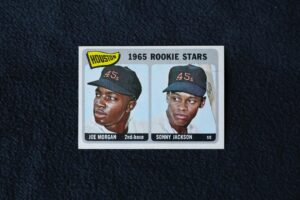Memorabilia cards have become a significant part of the trading card industry and are often highly sought after by collectors. These cards feature pieces of game-worn jerseys, equipment, or other items that have a connection to a particular athlete or event. While primarily collectibles, memorabilia cards can also provide a window into American culture and history. This article will explore how memorabilia cards reflect the American experience and why they are essential to the trading card industry.
The Rise of Memorabilia Cards
The use of game-worn items in trading cards can be traced back to the early 1990s, but it was in the late 1990s that the first memorabilia cards were introduced. These cards, which featured pieces of game-worn jerseys, quickly became a popular addition to the trading card industry. Collectors were drawn to the cards because they provided a tangible connection to their favorite athletes and events.
Over the years, memorabilia cards have evolved and expanded to include a wide range of items, such as pieces of basketballs, bats, or even game-used pucks. The popularity of these cards has led to a thriving secondary market, with sports card buyers willing to pay top dollar for rare and valuable memorabilia cards.
Reflecting American Culture
Memorabilia cards provide a unique window into American culture and history. They often feature items that directly connect to significant events or athletes, and they can tell a story about the evolution of sports in America. For example, a memorabilia card featuring a piece of a game-worn jersey from a baseball player who broke a significant record can tell the story of that athlete’s accomplishment and its impact on American culture.
In addition to reflecting the sports culture, memorabilia cards can also reflect broader cultural trends. For example, a memorabilia card featuring a piece of a basketball jersey from the 1992 Olympics, where the “Dream Team” won the gold medal, can tell the story of America’s dominance in basketball and its place in the global community.
Capturing Moments in History
Memorabilia cards can also capture significant moments in history. A memorabilia card featuring a piece of a game-worn jersey from September 11, 2001, games played by Major League Baseball teams can tell how sports helped bring America together after the tragedy. Memorabilia cards featuring items from significant events, such as the Miracle on Ice game in the 1980 Winter Olympics, can also capture important moments in American history.
The Power of Nostalgia
In addition to reflecting American culture and history, memorabilia cards also tap into the power of nostalgia. Many collectors are drawn to these cards because they connect to their past and can evoke memories of a particular game, athlete, or event. Collectors may be willing to pay top dollar for memorabilia cards attached to a significant event or athletes from their childhood, such as a piece of a jersey worn by Michael Jordan or a ball used in a World Series game.
The Appeal to Sports Card Buyers
Memorabilia cards have become a significant part of the trading card industry and are highly sought after by sports card buyers. The appeal of these cards lies in their unique connection to American culture and history. Collectors are drawn to these cards because they provide a tangible link to their favorite athletes and events, and they can tell a story about the evolution of sports in America.
Memorabilia cards are also highly collectible, and many collectors are willing to pay top dollar for rare and valuable cards. Sports card buyers who are savvy about the market can buy and sell memorabilia cards for a profit, turning their hobby into a viable business. With the secondary market for memorabilia cards growing, sports card buyers increasingly seek rare and valuable cards to add to their collections or sell for a profit.
The Future of Memorabilia Cards
Memorabilia cards have become a significant part of the trading card industry and will likely remain popular with collectors for years to come. As the industry continues to evolve, we can expect new and innovative use of game-worn items in trading cards. The cards will continue to provide a unique window into American culture and history and remain highly collectible for sports card buyers.
Memorabilia cards are an essential part of the trading card industry and provide a unique connection to American culture and history. These cards can tell a story about the evolution of sports in America, capture significant historical moments, and tap into the power of nostalgia. For sports card buyers, memorabilia cards are highly collectible and can be a profitable investment. As the industry continues to evolve, we can expect new and innovative uses of game-worn items in trading cards, ensuring they remain a significant part of American culture and history.


